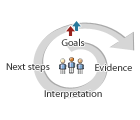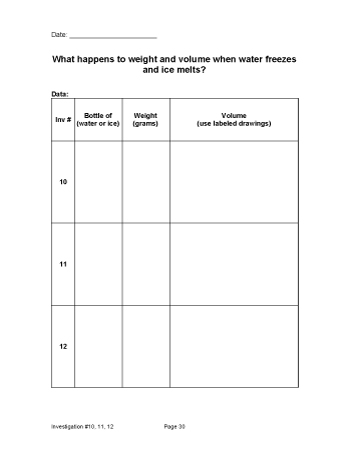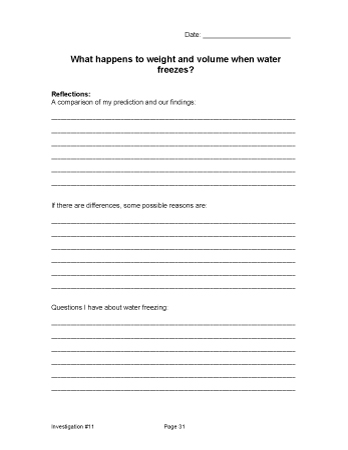What happens to weight and volume when water freezes?
Plan Investigation 11
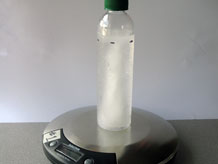
How much can something change and still remain the same? When water freezes, the changes seem dramatic, and yet the kind of matter remains the same - it's still water. While liquid water and frozen water have different names and some different properties, the kind of matter remains the same, and for a specific sample of water, the weight does not change. The volume of a sample is not conserved across a phase change. Freeze water and its volume will increase. Evaporate that same sample of water and its volume will increase even more, but its weight will be conserved.
Formative Assessment
What happens to weight when water freezes?
Available online at inquiryproject.terc.edu
What happens to weight when water freezes?
You can find evidence of students’ ability to interpret class data by listening to their make meaning discussion.
Listen for these ideas about discrepant weight data as you interpret students’ explanations:
- A small weight increase occurred because we didn’t wipe off the condensation that was added to the outside of the container.
- A weight loss is due to water seeping out of a cracked container.
- A small change in weight (+/- 1-2 grams) could be due to the inaccuracy of the scale.
A next step might be to have students return to their predictions and ask if anyone is thinking differently now about what happens to the weight and volume of water when it freezes.
In this session, students follow up on the investigation they launched in the previous class. They discover that the volume of their samples increased as the water froze, but they may have mixed results when they report on the weight. The question of weight can be complicated by inaccurate scales, condensation that forms on the outside of the bottles, and a tendency to believe that if the volume of a sample increases, so must the weight. While the topic of condensation is not related to the investigation question, its appearance on the outside of frozen containers affords an opportunity to discuss this process, which is so common and yet still mysterious to many.
By the end of this session students will have evidence that the volume of their water samples increased and weight stayed the same across the phase change from liquid to solid.
Learning Goals
- Understand that across phase change, while the volume changes, the weight of a sample stays the same
- Understand that weight is the reliable measure of the amount of matter
| Sequence of experiences | ||
|---|---|---|
| 1. Ask the question | All Class | 5 Mins |
| 2. Collect data | Small Groups | 10 Mins |
| 3. Share findings | All Class | 15 Mins |
| 4. Make meaning | Discussion | 15 Mins |
Materials and Preparation
For the class:
- Post the investigation question in a place where all students can see it.
- Make a class chart titled, "Transforming Water to Ice and Ice to Water"; an example is found in Step 3.
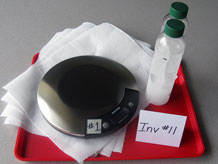
- Recover the bottles from the freezer as close as possible to start of class. Insulate the bottles as necessary to keep them frozen until students get them.
For each group:
- 1 digital scale
- 2 plastic bottles prepared in the last class that are now frozen
- 4 paper towels
1. Ask the question
Remind students that they are continuing to investigate transformations of water and ice. In our last class we measured the weight and volume of a tightly closed bottle of water before we put it in the freezer. Today we will collect more data.
Today's investigation question is:
What happens to weight and volume when water freezes?
Students will collect weight and volume data for their now-frozen bottles. They will compare that data with the weight and volume data they collected before the bottles were frozen.
2. Collect data
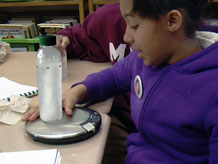
Distribute the materials.
Do students notice condensation on the outside of the frozen water bottles? Remind them that the condensation is coming from water vapor in the classroom air, and that condensation is the reverse of evaporation. Water vapor in the air is cooling when it meets the cold surface of the bottle and condensing on it. They'll need to wipe off the condensation from the bottles before they weigh them, so they'll get an accurate weight for just the bottle and the ice inside of it. Students record their findings in the data table on the page [What happens to weight and volume when water freezes and ice melts?] in their Science Notebooks.
- Dry condensation from the container.
- Measure and record the weight.
- Observe and record the volume by checking the level of the ice. Did it stay the same, increase, or decrease?
- Complete [What happens to weight and volume when water freezes?] reflections in the Science Notebooks.
3. Share findings
Have students contribute data to the class table: weight before freezing, the weight after freezing, and the volume after freezing (same, increased or decreased).
| Pair | Weight before Freezing (grams) | Weight after Freezing (grams) | Volume after Freezing (Notes) | Weight after Melting (grams) | Volume after Melting (Notes) |
|---|---|---|---|---|---|
| 1 | |||||
| 2 | |||||
| 3 | |||||
| etc. |
Why does water expand when it freezes?:
In simplest terms, the tiny water particles rearrange themselves to form a crystal lattice when water freezes. In their new arrangement, the particles are not as tightly packed together as they are in liquid form and they take up more space.
4. Make meaning
Classroom Case
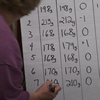

Data
The Role of Data Discussions
Available online at inquiryproject.terc.edu
The class table now holds weight and volume data for (12) bottles. That data includes: weight before freezing; weight after freezing; and information about volume.
Purpose of the discussion
The purpose of this discussion is for students to connect the investigation question with the weight and volume data they have collected as they make claims and describe the supporting evidence.
Engage students in the focus question
Based on the data we have collected, what can we claim about weight and volume when water freezes? Let's start with volume.
Volume
Class data will very likely justify a claim that volume increases when water freezes.
- What can we claim about volume? What evidence supports this claim?
- How do your predictions compare with the classroom data?
- Have you noticed other situations in which the volume of water expands when it freezes?
- water bulging over the top of the ice cube tray
- hoses expanding or bursting when left outside in freezing weather
Note: Although the actual weight of the water in the bottles does not change during freezing, it's unlikely that the weight measurement will remain the same for every pair in the classroom, due to the limitations of the scales or other sources of error. Students may think that since the volume of water has increased, the weight must also increase.
Weight
- What can we claim about weight? What evidence supports this claim?
- How do your predictions compare with the classroom data?
If every pair reports no weight change, you can skip the question below.
- The scales round to the nearest gram and are not the most accurate scales. A one-gram difference might be explained by a scale giving different readings, so we can assume the weight stayed the same.
- No matter was added to or removed from the inside of the container once it was covered, so the amount of matter inside the container has not changed.
- Condensation adds new matter to the outside of the container, so if someone did not completely remove the condensation, this might explain a small increase in the weight, but the weight of water inside stayed the same.
Save the frozen containers. Students will weigh and measure them again in the next class, after the ice has completely melted. Since the containers are sealed, evaporation will not influence the results.
Summarize the discussion and recap the investigation
Using the same language students have used, summarize their main ideas.
Include the following key ideas:
- The volume of a sample of water increases when it is frozen. Note: This is the case for water. It may not be so for all materials.
- The weight of a sample of water remains the same when it is frozen.
- (Include if appropriate) Reasoning tells us that small changes in the weight of a sample can be explained by an error of some type. (rounding or reading error.)
- Highlight the idea that weight is the measure of the amount of matter, the amount of "stuff", so when there is no change in the amount of matter-no one added more water to the bottle or removed water from the bottle-then we should expect no change in the weight.
- Remind students that when they dissolved salt in water and the salt was no longer visible, it was weight that convinced us that the salt was still there.
As you recap the investigation, be sure there is understanding of these points:
- The class collected and shared weight and volume data for the samples of frozen water.
- The data allowed the class to answer the investigation question, What happens to weight and volume when water freezes?
- We learned that the weight of a water sample remains the same even when volume increases.
- Since reasoning, as well as most of the data, tells us that the weight of water does not change when no water is added or removed, we conclude that a small change in the weight of a sample is due to rounding or possibly a recording error.

